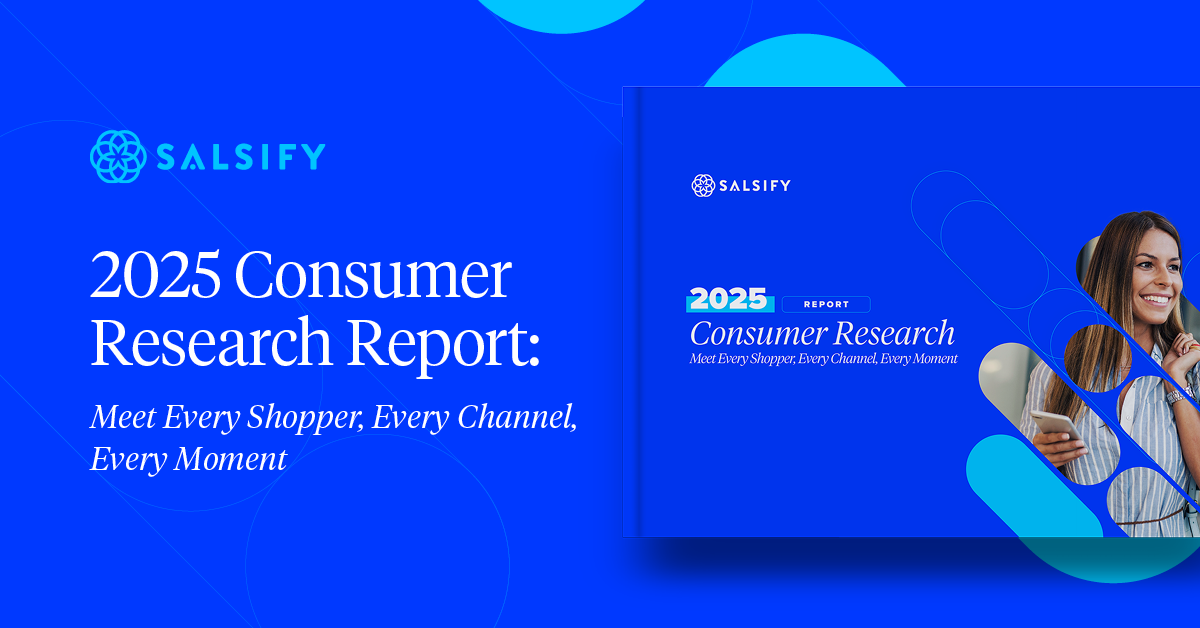The Top 10 Consumer Trends To Watch in 2025
Written By: Doug Bonderud
Consumers aren’t consistent. What they like, what they want, and what they’re willing to purchase changes in response to social, economic, and demographic factors.
On a small scale, these changes are simply individual preferences. At large, they represent consumer trends: purchasing patterns that can directly impact brand success.
While some trends are short-lived, others have more staying power. Here are 10 consumer trends to watch in 2025, what they mean for your brand, and how you can make them work for you.
1. The Success of Social Media
There’s no denying the success of social media for sales. As noted by Porch Group Media, 84% of consumers search for brands on social media before they buy, 67% of customers have made a purchase through social platforms, and 29% made purchases on the same day they discovered products.
It’s no surprise that social media made our list last year and will continue to drive success through 2025. For brands, making the most of social media means understanding your audience. Which social channels do they prefer? What types of content do they search for, engage with, and comment on?
The more brands know about customers’ social preferences and consumer trends, the better they can create tailored experiences.
2. The Impact of Influencers
Influencers will remain a top consumer trend in 2025. According to a report from Sprout Social, 49% of consumers make purchases because of influencer posts.

For brands to make the most of influencers, several considerations are critical.
First, partner with influencers who can naturally and authentically interact with your products or services. If experiences seem staged or forced, buyers won’t bite.
It’s also important to consider your audience. As the Sprout Social report notes, Gen Z trusts influencers at a higher rate than other generations. With these buyers now ranging from 13 to 27 years of age, brands have the potential to tap a significant source of disposable income.
3. The Optimization of Omnichannel
Finally, brands can’t forget the need for continued omnichannel optimization. More than three-quarters of buyers say they use two or more channels for every purchase, and 30% say they use at least three, reports Retail Dive.
Common pathways include social interactions followed by mobile research, which then branches off into more in-depth product evaluations or in-person shopping.
As a result, optimizing omnichannel means that no matter how good a single touchpoint may be — for example, you might have a popular social channel or top-tier ecommerce store — it’s not enough on its own. Teamwork makes the dream work.
4. The Adoption of Artificial Intelligence (AI)
AI saw strong growth through 2024, and this trend is expected to continue in 2025. According to data from Deloitte, 92% of consumers are excited to try or have already tried interactive in-store displays.

This sets AI up for even greater disruption going forward. From intelligent, interactive displays that provide personalized recommendations to customized deals and sales offers delivered via email or mobile notifications, AI offers a way for brands to build better relationships.
5. The Power of Shopping Experiences
According to McKinsey & Company, customers value experiences over goods. While product quality and availability remain priorities, consumer trends indicate shoppers want brands to engage them at every step of the buying journey.
The result is a shift away from simple product display pages (PDPs) to sites that offer the ability to “try on” clothes in augmented reality (AR) or place new furniture in a virtual replica of a buyer’s home. Put simply, products are often purchased and then forgotten. Experiences are what customers remember.
6. The Significance of Sustainability
Sustainability has made the list before, but historically, there’s been a divide between what consumers say they want and what they’re willing to pay for. While sustainability is a priority for many buyers, they’re often reticent to shell out more money for sustainable goods.
As noted by PWC, however, customers are now talking the talk and walking the walk — consumers are willing to spend 9.7% more on average for products they know are sustainable.
“Know” is the keyword in that sentence. Brands must clearly demonstrate what makes their products sustainable and how they plan to maintain this sustainability over time.
7. The Value of Virality
Ask a Duolingo user about the company’s mascot, Duo the Owl, and they’ll tell you all about him — how he pops up on notifications reminding them about doing their lesson for the day and how he’s completely not chill about the whole thing.
While this could have gone badly for Duolingo, the company instead leaned into the idea with a wildly popular viral marketing campaign. Customers love it, and engagement with the platform has increased.
Expect the value of viral trends to expand in 2025 as brands look to capture consumers’ constantly shifting attention. The trick to viral value? Know your audience and speak to what they want. There’s nothing more “cringe” than a brand trying too hard.
8. The Evolution of the Economy
As noted by Sourcing Journal, consumer spending is projected to slow as U.S. economic growth also loses steam. For brands, this means prioritizing product quality and value for money as consumers look to rein in excess spending.
While there’s no doubt that economic factors will impact spending, the question is to what degree. The chances of recession over the next 12 months are holding steady at 25%; brands need to monitor economic climates and be prepared to adjust pricing in response.
9. The Advancing of Allyship and Inclusivity
Allyship and inclusivity are becoming more important to consumers. According to recent research from the Association of National Advertisers (ANA), 82% of survey respondents say that brands should increase their LGBTQ+ marketing efforts.
Beyond LGBTQ+ representation, consumers are seeking broader inclusivity across age groups, abilities, body types, ethnicities, and gender identities in brand communications and products.
Prioritize authenticity and action to show support as a brand. Simply saying you’re an ally isn’t enough — consumers want to see inclusion reflected in marketing, sales, and social practices.
10. The Role of the Real
While 2025 will see an uptick in AI, brands also need to keep it real — literally. According to Getty Images survey data, 98% of consumers say that “authentic images and videos are pivotal in establishing trust.”
For brands, this means making AI transparency a top priority. If images are AI-generated or AI-enhanced, say so. If they’re authentic, make that clear. Customers understand the value of AI — they just don’t want to guess what’s real and what isn’t.
Taking on 2025
2025 promises to be an exciting year for consumer trends. Some old standbys are still in the running, like social media and the impact of influencers, while AI and sustainability are gaining ground. Brands also need to pay attention to the cutting edge, as trends like allyship and AI transparency become purchaser priorities.

2025 Consumer Research Report
Download the consumer report to get the latest insights into how and why shoppers move across the digital shelf.
DOWNLOAD REPORTWritten by: Doug Bonderud
Doug Bonderud (he/him) is an award-winning writer with expertise in ecommerce, customer experience, and the human condition. His ability to create readable, relatable articles is second to none.
Recent Posts
What the Data Says About Consumer Interest in AI Shopping Agents
How Retailers Can Use Geolocation To Create Personalized Shopping Experiences
3 Examples of a Personalized Shopping Experience and How To Create Them
Subscribe to the Below the Fold Newsletter
Standing out on the digital shelf starts with access to the latest industry content. Subscribe to Below the Fold, our monthly content newsletter, and join other commerce leaders.

.svg)